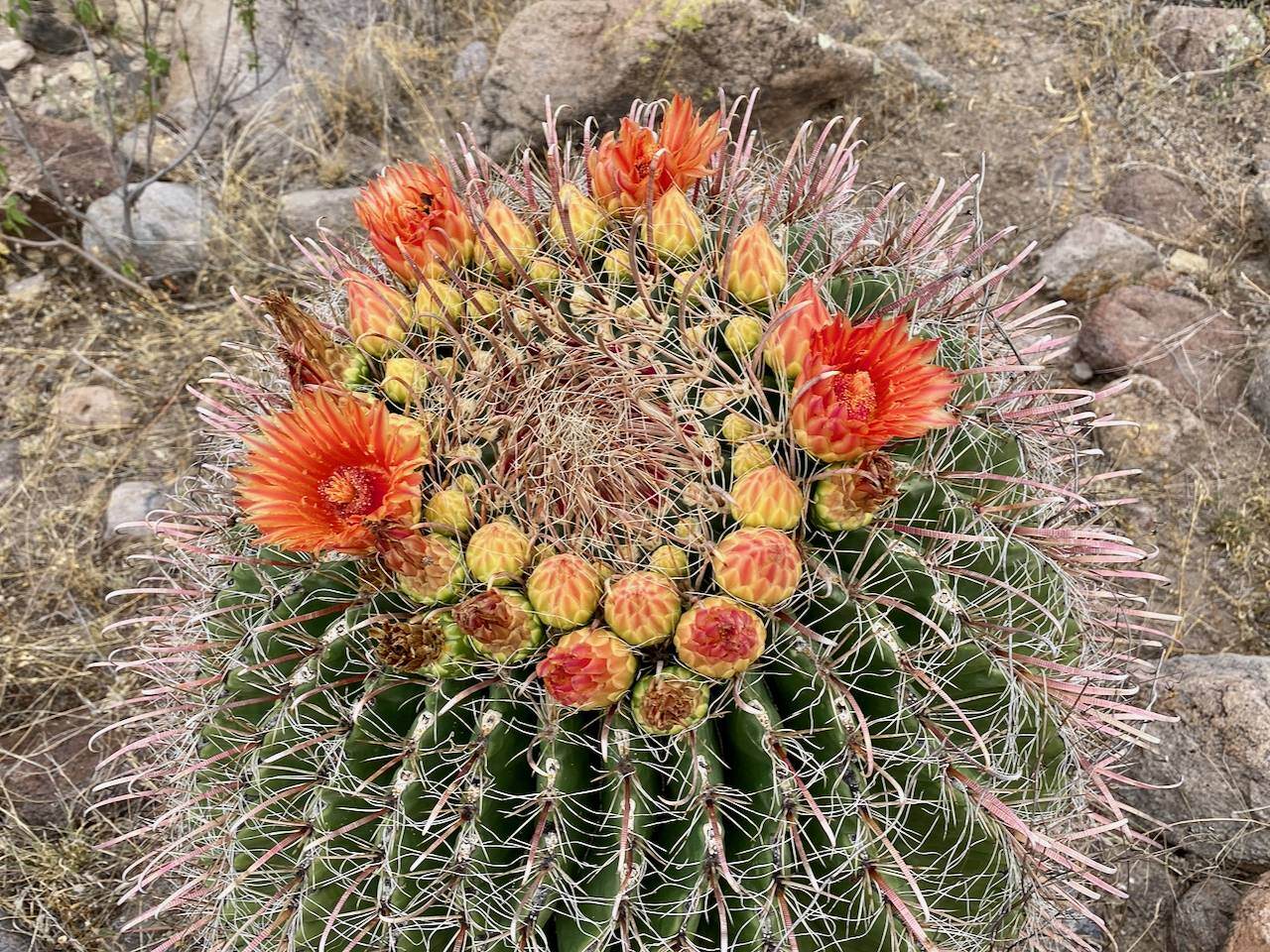The barrel cactus, with its sturdy, rounded form and formidable spines, is a master of survival in the harsh desert environment. Its adaptations offer valuable lessons for designing homes that are not only comfortable but also exceptionally resilient.
1. Spherical Form and Minimizing Solar Exposure:
- The barrel cactus's spherical shape minimizes its surface area exposed to direct sunlight, reducing heat absorption.
- Architectural Application:
- We can incorporate rounded or curved forms into our desert home designs, particularly for west-facing walls or roofs. Domes, vaulted ceilings, and curved walls can help deflect solar radiation and minimize heat gain.
- The overall building footprint could have rounded corners, to reduce the direct impact of the sun.
- Courtyards with curved walls can also improve airflow and create shaded microclimates.
- Example:
- Imagine a home with a gently curved roof, resembling the barrel cactus's form. This roof would deflect sunlight, keeping the interior cool. Rounded courtyard walls would provide shade and enhance natural ventilation.
2. Dense Spines and Natural Defense:
- The barrel cactus's dense network of spines provides shade, reduces airflow, and deters animals.
- Architectural Application:
- We can design exterior shading systems that mimic the function of spines. Perforated metal screens, adjustable louvers, and dense vegetation can create a protective barrier against the sun and wind.
- The placement of thorny xeriscape plants around the perimeter of the home can also act as a natural defense against intruders and harsh weather.
- The use of textured exterior surfaces, similar to a high density of small spines, can increase surface area for heat dispersion.
- Example:
- A home could feature perforated metal screens that surround a patio, providing shade and ventilation. Thorny native plants could be strategically placed around the perimeter, creating a natural defensive barrier.
3. Ribbed Structure and Water Runoff:
- The barrel cactus's ribbed structure channels rainwater toward its base, maximizing water absorption.
- Architectural Application:
- We can design roofs and walls with subtle ribbing or grooves that channel rainwater toward collection points. Rainwater harvesting systems can then store this water for later use.
- The ribbing can also assist with channeling airflow, and assist with passive cooling.
- Example:
- A home could feature a gently sloping roof with shallow grooves that channel rainwater into a cistern. These grooves could also assist with air movement across the roof surface.
4. Robustness and Material Selection:
- The barrel cactus's thick, fleshy body provides structural support and resilience.
- Architectural Application:
- We can choose durable, high-thermal-mass materials, such as rammed earth, adobe, or thick concrete, for the exterior walls. These materials provide structural support and thermal inertia, mimicking the barrel cactus's robust form.
- Material selections that are naturally very durable, and require very little maintenance, are ideal for the harsh desert environment.
- Example:
- A home constructed from thick rammed earth walls would provide exceptional thermal mass and structural support, creating a cool and comfortable interior.
Conclusion:
By drawing inspiration from the barrel cactus, we can design desert homes that are not only aesthetically pleasing but also exceptionally resilient. Its adaptations to the harsh desert environment provide a blueprint for creating dwellings that are cool, water-efficient, and structurally robust. By embracing biomimicry, we can build homes that harmonize with the desert landscape and provide a safe and comfortable haven for their inhabitants.




Leave a Comment